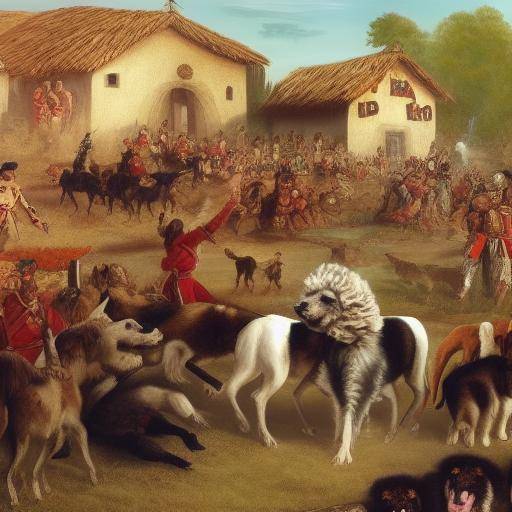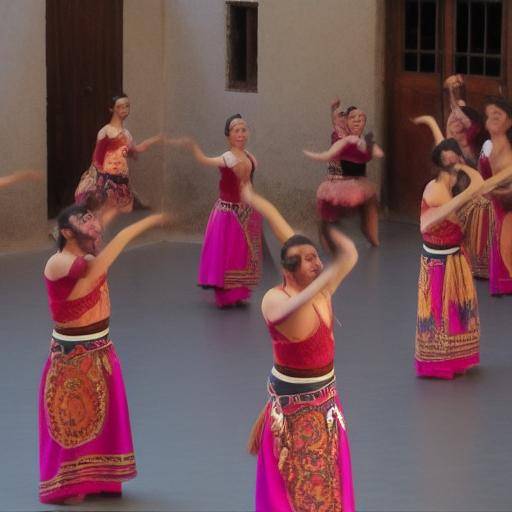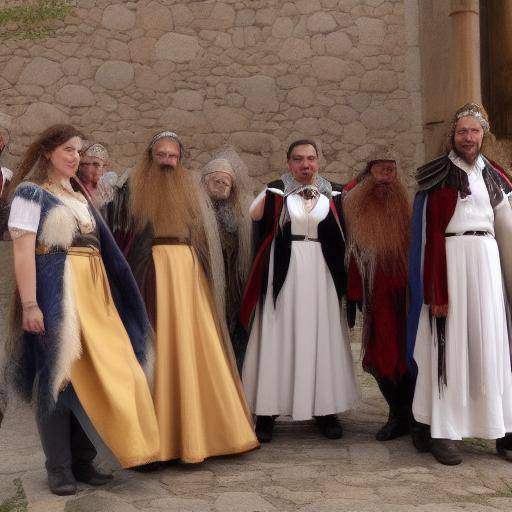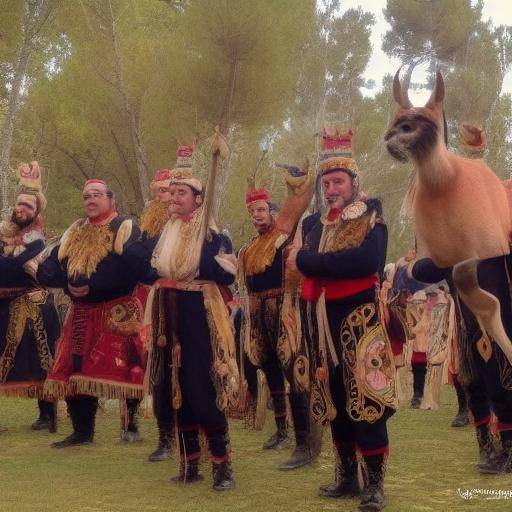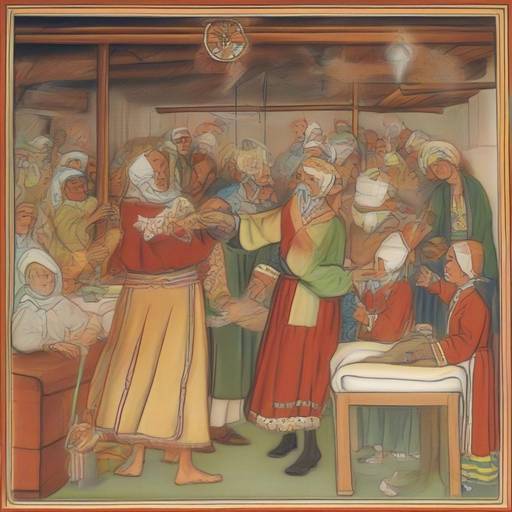
Scandinavian folklore is known for its wealth in myths and legends that tell stories of magical creatures, fantastic beings that have inhabited the narratives of this region for centuries. In this guide, we will explore the fascinating world of Nordic magical creatures, their stories, cultural meanings and their relevance today.
Introduction
Scandinavian folklore is full of magical creatures that have captured the imagination of the whole world. From the mighty gods and giants to the cunning trolls and marine beings, Scandinavian legends are filled with extraordinary beings. In this guide, we will immerse ourselves in the world of these mythical creatures, discovering their origins, their roles in mythology and their presence in contemporary folklore. Join us on this exciting journey through the magical northern lands.
History and Background
Scandinavian folklore has its roots in the worldview of ancient Nordic cultures, such as the Vikings and the former inhabitants of Sweden, Denmark, Norway, Iceland and Finland. These cultures believed in a universe inhabited by magical beings, where the gods coexisted with giants, elves and other supernatural beings. Over the centuries, these beliefs were reflected in sagas, eddic poems and popular tales that make up the rich acquis of Scandinavian folklore.
One of the most distinctive features of Scandinavian folklore is its close connection to nature and landscape. Each magical creature is linked to a particular aspect of the natural environment, reflecting the profound relationship that the Nordic peoples had with their surroundings. The forests, mountains, rivers and seas of Scandinavia thus become mythical scenarios populated by a wide range of extraordinary beings.
Main Magical Creatures
Trolls
Trolls are perhaps the most emblematic creatures of Scandinavian folklore. Described as large and grotesque beings, they usually live in caves and mountains. Trolls are known to be hostile to humans and for their love for darkness, as the sunlight can turn them into stone.
Elves and Huldra
The elves, also known as alfr in ancient Nordic, are ethereal and beautiful beings that inhabit the forests and meadows. The Huldra, a kind of female elve, is particularly famous for its charming beauty and its hollow back covered with tree bark. It is said that the Huldra can be beneficial or dangerous, depending on the behavior of those who find it.
Nøkken and Draugr
The Nøkken is a spirit of water that can adopt various forms to attract humans to their underwater abode. His representation varies from a beautiful man to an enchanted horse. On the other hand, the Draugr is a non-dead, a sort of viking zombie, which protects its treasures and asolates the living.
Jötnar (Gigantes)
The Jötnars are giants who personify the chaotic forces of nature. In the Nordic mythology, they are the eternal enemies of the gods and represent disorder and destruction. They live in Jotunheim, one of the nine worlds of Nordic cosmology.
Analysis in Deep
Cultural significance
The magical creatures of Scandinavian folklore not only represent fantastic entities, but also incarnate cultural values and symbolism. The Nordic gods, for example, embody fundamental aspects of human condition, such as courage, wisdom and justice. On the other hand, giants and trolls symbolize unpredictable and often hostile natural forces. These interpretations show the complexity and wealth of Scandinavian folklore, as well as its cultural and symbolic relevance.
Symbolism and Nature
The symbolism of Scandinavian magical creatures is deeply rooted in nature. The trolls represent the gross and mysterious forces of the mountain, while the elves and the Huldra symbolize the beauty and magic of the forest. The Nøkken and the Draugr evoke the danger and mystery of the waters and cemeteries. This strong bond with nature reflects the relationship of the Nordic peoples with their surroundings, where every aspect of the landscape is animated by supernatural beings.
Comprehensive review
Scandinavian folklore has left a lasting legacy in contemporary popular culture. The stories of Nordic magical creatures continue to inspire literary works, films, television series and video games around the world. Even fashion, design and contemporary architecture have been influenced by the aesthetic and imaginary of Scandinavian folklore, highlighting its lasting impact on modern society.
Influence in Popular Culture
Series like "Vikings" and films like "Thor" by Marvel have taken the magical creatures and the Nordic myths to a global audience. Video games, such as "The Elder Scrolls" and "God of War", have also incorporated elements of Scandinavian folklore, allowing players to interact with these mythical beings.
Art and Literature
Authors like J.R.R. Tolkien inspired Scandinavian folklore to create worlds rich in mythology and fantastic creatures. His work "The Lord of the Rings" presents elves, trolls and other creatures that have direct parallels in the Nordic legends.
Comparative analysis
By comparing Scandinavian folklore with other mythological traditions, you can find both similarities and differences. For example, trolls have parallels with the ogres of European legends, while the Nordic elves share characteristics with Celtic fairies. However, the unique geographic and cultural context of Scandinavia gives its magical creatures a distinctive character.
Practical Tips and Accessible Recommendations
For those interested in exploring more about Scandinavian folklore, here are some recommendations:
- Read the Eddas: Edic poems are an invaluable source for understanding Nordic mythology.
- Visit Scandinavia: Exploring the landscapes that inspired these legends can be an enriching experience.
- Participate in Festivals: Assisting local festivals, such as the Viking Festival in Norway, can provide an immersion in Nordic culture and folklore.
- Study Literature and Film: Investigate how Scandinavian folklore has influenced contemporary literary and cinematographic works.
Industry Perspectives and Expert Reviews
Academics and experts in mythology highlight the importance of preserving and studying Scandinavian folklore. It not only offers a window to the beliefs and values of ancient Nordic societies, but also enriches our understanding of comparative mythology.
Opinions of Experts
Professors of mythology and folklore have pointed out how the stories of magical creatures reflect the concerns and hopes of the Nordic peoples. Moreover, the growing popularity of these legends in popular culture underlines their continued relevance.
Case Studies and Real World Applications
The Impact of Folklore on Tourism
In places like Iceland and Norway, Scandinavian folklore is an integral part of the tourist industry. Tourists can visit legendary sites, such as the Seljalandsfoss waterfall in Iceland, associated with the elve home, or explore the mountains of Norway, where the trolls are said to be inhabited.
Educational projects
In several schools and museums in Scandinavia, educational programs have been developed that use folklore to teach history, literature and culture. These programs help to keep traditions alive and to transmit knowledge to new generations.
Future Trends and Predictions
Revaluation of Folklore
With the growing interest in mythology and folklore, the stories of Nordic magical creatures are expected to continue to gain popularity. Digitalization and accessibility to online resources will allow more people to discover and explore these fascinating legends.
Innovations in Media
The use of virtual and increased reality to create immersive experiences based on Scandinavian folklore could revolutionize the way we interact with these stories. Museums and theme parks could integrate these technologies to offer virtual guided tours to the mythical worlds of Scandinavia.
Conclusions & FAQs
Conclusions
Scandinavian folklore, with its magical creatures and fascinating stories, is a rich source of inspiration and knowledge. These legends not only connect us with the past, but also continue to influence contemporary culture and creativity. By exploring the world of trolls, elves and giants, we discover a narrative that transcends time and space, offering us a unique vision of
the relationship between humans and the supernatural.
Frequently asked questions
- What are the most famous magical creatures in Scandinavian folklore?
- Trolls, elves, Huldra, Nøkken, Draugr and Jötnar are some of the most emblematic creatures.
- What symbolizes the magical creatures in the context of Scandinavian folklore?
- These creatures symbolize various aspects of nature, culture and human condition, from beauty and wisdom to chaos and destruction.
- How has Scandinavian folklore influenced the current popular culture?
- It has influenced literature, cinema, television, video games and tourism, keeping alive the fascination with the Nordic legends.
- Are there tourist routes to explore Scandinavian folklore and its magical creatures?
- Yes, many Scandinavian countries offer tours and thematic routes that explore legendary places and landscapes associated with these creatures.
- How has the interpretation of Scandinavian folklore evolved over time?
- It has evolved from being an integral part of everyday life and religious beliefs to becoming a source of entertainment and cultural study.
- What lessons can we learn from the magical creatures of Scandinavian folklore?
- They teach us about the relationship between humans and nature, the importance of morality and wisdom, and the richness of cultural traditions.
Exploring Scandinavian folklore is getting into a world of wonders and mysteries that connects us with the deepest of human imagination and nature itself. Embark on this journey and discover the magical creatures that have shaped the Nordic culture!

